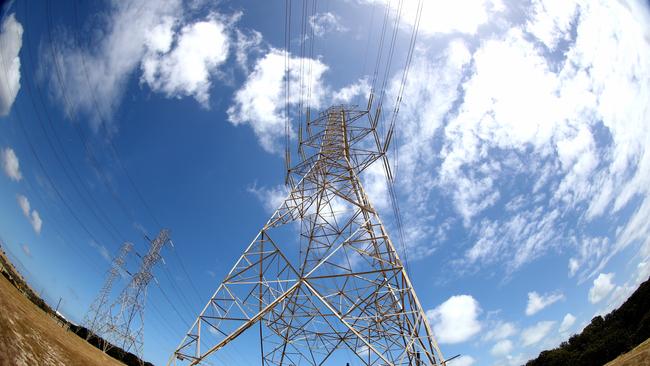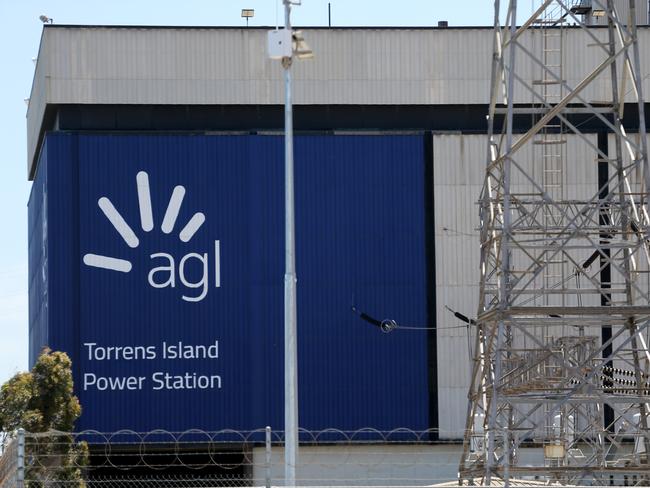AGL enters mobile plan market
You mightn’t expect an energy retailer to be selling SIMs, but nothing seems off limits in 2021.

Hello and welcome to The Download, The Australian’s technology blog for the latest tech news.
David Swan 1.45pm: Bargaining code ‘should go further’
The government‘s proposed news media bargaining code does not go far enough and should be broadened to force the tech giants to reveal their mysterious algorithms, a Senate committee reviewing the new laws has heard.
Speaking at a committee hearing on Monday Matt Nguyen, the policy lead for technology advocacy group Reset Australia, said that the bargaining code, which would force tech giants to pay publishers for news content, should be widened to help fight fake news on Google and Facebook‘s platforms.
“We believe the bill should go further,” Mr Nguyen said. ”The legislation should establish an empowered audit authority, which should be capable of assessing how well ad revenue redistribution and algorithmic curation of news are serving the public.”
Independent South Australian Senator Rex Patrick last week flagged amendments to the bargaining code legislation, including requiring the Australian Competition & Consumer Commission to conduct regulator audits of algorithms used by tech platforms that impact on access of Australian news media.
Mr Nguyen said the regulator should examine how the tech giants‘ algorithms monetise and promote disinformation ahead of accurate information.
“The last few weeks we have experienced the sobering power these platforms have over our lives. Big tech has threatened to pull services from the country, they have altered the content that thousands of Australians see in the name of a media stunt, and they have actively used the monopoly control over information markets to try and influence Australian opinion,” he said. ”This reveals an entrenched disregard for community welfare and threatens to undermine Australia‘s public decision making processes. The solution that these platforms propose is to use another one of their products, rather than an accountable, transparent mechanism that fairly considers commercial and public interests.”
He added that algorithmic audits would take into account the impact the tech giants have on communities and establish a new operating standard.
“The platforms will say that this code is unworkable, but we don‘t need it to work for them, we need it to work for Australians.”
Adam Portelli, the director for media at the Media Entertainment and Arts Alliance, the union that represents journalists, echoed calls for the code to become law.
He said Australia had lost between 4000 and 5000 journalism roles over the last decade, and that hundreds of media outlets had closed or dramatically shrunk in size.
“We strongly support a system to recoup some revenue from digital platforms operating in Australia as a contribution towards the production costs of the journalistic material that they carry,” Mr Portelli said.
“We say it is critical for the code mandates that any revenue received by many organisations be spent on the production of journalistic content. In the absence of that requirement, there is evident risk that companies could use the funds for other purposes.
“The media has hit a tipping point in this country, a moment that has come about by the use of declining advertising revenues. Public interest journalism, the kind of journalism that exposes the powerful to scrutiny is not a luxury. It is critical to an essential part of functioning democracy. This requires adequate resourcing and enough journalists on the ground.”
Google on Monday published a new blog post re-iterating its position that the code‘s passage would force it to remove search in Australia.
It said it would be forced to shut down search entirely, rather than merely remove news from its search results.
“This is not possible due to the extremely broad and vague definition of “news” in the code—which includes any “content that reports, investigates or explains current issues or events of interest to Australians”, the company said. ”This goes far beyond what most of us would consider “news.” And the content we’d need to remove could be on any website at any time, not just the websites of the news businesses registered under the code.
1.30pm: TikTok rival draws big investor following
Chinese short-video app operator Kuaishou Technology will raise $US5.4 billion from its Hong Kong listing, hitting its maximum fundraising target after meeting strong investor demand.
The initial public offering is set to be the world’s largest in more than a year, and will value the company at nearly $US61 billion. Kuaishou, which is backed by Tencent Holdings , competes with ByteDance, the Chinese company behind TikTok and its sister app Douyin.
Both companies have fed growing demand from younger Chinese people to watch and record short videos on their smartphones. Kuaishou’s namesake short-video platform is the world’s second largest, according to data cited in its prospectus, and its services in China had 305 million average daily active users in the nine months ended September.
Kuaishou, or “fast hand” in Chinese, will sell stock at 115 Hong Kong dollars (US$14.80) a share, the top of an earlier range of HK$105 to HK$115, according to a term sheet seen Saturday by The Wall Street Journal. Its shares will start trading February 5.

The IPO helps cement Hong Kong’s standing as a market for big Chinese technology groups. The city in recent years has secured IPOs from companies such as Meituan, a major player in food delivery and travel bookings, and smartphone maker Xiaomi, as well as secondary listings from US-listed businesses such as Alibaba Group Holding and JD.com.
Shares in these companies have surged, with Meituan’s stock more than tripling in the past 12 months, and Xiaomi’s more than doubling over the same period. A tech-focused benchmark introduced last summer by Hang Seng Indexes, compiler of the city’s widely followed Hang Seng Index, has gained 32 per cent in the six months through Friday’s close.
Kuaishou is also benefiting from broader IPO market exuberance, both in Hong Kong and internationally. After making hot market debuts in Hong Kong last year, Chinese vaping-technology company Smoore International Holdings Ltd. , and bottled-water giant Nongfu Spring, for example, are both now worth multiples of their valuations at their IPOs.
Units of Morgan Stanley, Bank of America Corp. and China Renaissance Holdings Ltd. are acting as joint sponsors for Kuaishou’s IPO. A block of 10 cornerstone investors supported the deal by committing to buy $US2.45 billion of shares wherever in the range it priced.
A so-called green-shoe option means underwriters could ultimately increase the deal’s size by 15 per cent, to a final total of $US6.2 billion.
Chris Griffith 9.00am: AGL to sell SIMs
You mightn’t expect a power and gas retailer would enter the mobile phone plan market, but that’s exactly what AGL is doing. It comes on the back of AGL announcing internet plans late last year.

The energy company says its mobile SIMs will come with no-lock in contracts and discounts for customers who combine mobile services with an AGL energy plan.
Chief customer officer Christine Corbett says AGL is excited to become a one-stop shop for home energy, internet and now, mobile services. “We want to transform how Australians connect to the essential services that power their lives,” says Ms Corbett.
“We’re offering customers simplicity and ease by taking away the hassle of calling several providers and becoming the one provider who can offer it all. By bundling services, we are delivering value, convenience and flexibility for customers, while also helping to make homes and businesses smarter and more efficient.”
It also announced that an app was on the way to help customers manage energy supply. “AGL customers will soon be able to manage their essential services through the AGL app, making it easy to monitor energy and data usage and pay bills.”
AGL says its SIMs will use the Optus network and there will be three data plans: small (5GB), medium (20GB) and large (50GB). Plans are month-to-month, with no-lock in contracts and a $5 monthly discount will apply when combined with an AGL energy plan.
It’s in essence a third-party marketing of an Optus service with a $5 sweetener for joining.
AGL already offers NBN internet with its Home Basic, Home Standard and Home Fast plans costing $60, $65 and $80 monthly.
AGL also launched certified carbon neutral offerings on gas and electricity products. It says certified carbon neutral is part its climate statement commitments.
Chris Griffith 9.55am: Uber Eats dispute intensifies after backdown
The dispute over the conditions suffered by Uber Eats food delivery riders has intensified. Last week we reported that Uber was under fire over a new contract that says riders can be sacked if their actions have “the potential” to cause adverse publicity in the media.
There was also increasing concern about making it harder for food deliverers to claim employee status rather than perpetually be classed as contract workers.
While food delivery using an app is popular and fashionable, the conditions suffered by workers shows that not everything accessed via a shiny new smartphone app equates to the betterment of society.
The food deliverers on their bikes on the streets of Sydney during last week’s rain storms looked a miserable bunch struggling to earn what they could.
The Transport Workers Union says the new contract asks riders to take out their own workers’ compensation insurance. This is a further step in the road to cementing them in as contract workers, it says.
It also warns riders could have their pay revoked if a customer complaint is received, without right of reply.
The warning we reported last week that workers could lose their jobs if they have “the potential” to cause adverse publicity in the media sounds akin to thoughtcrime, straight out of George Orwell’s masterpiece Nineteen Eighty-Four. They could presumably be guilty of potentially causing adverse publicity before any adverse publicity occurs.
The TWU says Uber has backed away from that clause.
The union is urging the federal government to implement a tribunal with powers to set minimum standards for workers in the gig economy.
But there’s more. Slater and Gordon principal lawyer Andrew Rich says Uber Eats drivers and riders are not permitted to have any independent contact with customers or to establish customer connection for their own business and depend on Uber for the provision of work.
Yet at the same time Uber wants these people to be independent contractors.
“These Uber Eats drivers and riders have no capacity to actually negotiate the terms on which they are engaged - there is no semblance of equality in the bargaining positions of Uber and the drivers and riders,” he says.



To join the conversation, please log in. Don't have an account? Register
Join the conversation, you are commenting as Logout